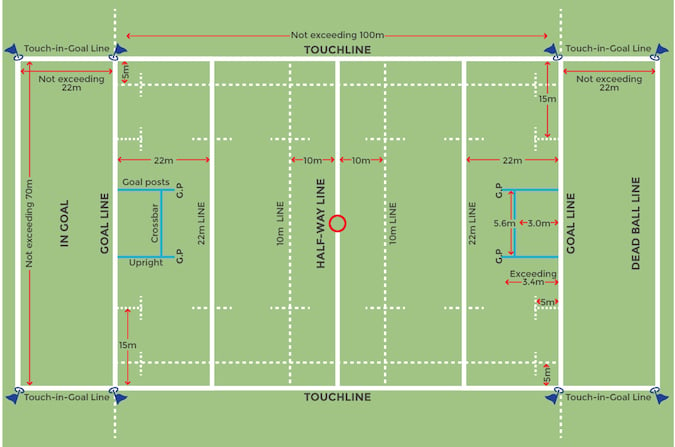Rugby Union: The Basics

Image credit: SportSG
Aim of the game
Known simply as rugby, rugby union is a full contact sport involving 15 players on each team,with 7 substitutes on the bench. The aim of the game is to score more points than the other side and points are scored through tries, conversions, penalty kicks and drop goals. At the end of the game, if the scores are level then the game ends in a draw. To learn more about the difference between 15-a-side, rugby sevens and tens, click Rugby Sevens and 10aside.
Duration of the game
A match is split into two 40-minute halves, played on a rectangular field, with a referee and two touch judges or assistant referees. Half-time is a mandatory rest period for players and this is limited to a maximum of 10 minutes after which both teams change ends.
Kick-offs
Each game starts with a drop kick from the halfway line and the ball must travel 10 metres from the kick off. If the ball fails to travel the minimum 10 metres, the receiving team has the option to ask for a re-kick, or in most cases request a scrum or a line out on the halfway line with the advantage of the feed or throw in. After every try, penalty kick or drop goal, the game restarts at the halfway line with the team that did not score taking a drop kick.
Equipment needed
Unlike most other ball sports, a rugby ball is oval in shape and traditionally made from hand-stitched leather. However, this meant that during rainy and muddy conditions, the ball was more difficult to handle, as it would get heavier and become more slippery. Modern technology has seen vast improvements towards high tech synthetic waterproof all-weather rugby balls that make handling easier even in adverse conditions. Jerseys, socks, shorts and boots make up a player’s kit and for safety reasons, a mouth guard is essential along with headgear if required by a player.
Rules of Rugby Union
Called ‘laws’, the rules of rugby union are defined by the International Rugby Board. The most basic law of the game is that no player is allowed to throw the ball forward to a teammate. In rugby, passes have to be thrown sideways or backwards to a teammate while the other ways to move the ball towards the opposition’s goal line to score points is by kicking or running with the ball.
To prevent the attacking side from scoring, players are allowed to tackle the opponent in possession of the ball. Players can only tackle by wrapping their arms around their opponents to bring them to the ground and players are not allowed to tackle opponents above the shoulder,or to use their legs to tackle or trip them.
The Pitch
The rugby pitch is filled with various line markings such as the halfway, 22 metre, 15 metre, 10metre, 5 metre and dead ball lines as well the goal or try line and in-goal areas where tries are scored. The pitch should be approximately 100 metres in length and 70 metres wide with H-shaped goalposts on each goal line. The distance between the goal posts is 5.6 metres with a minimum crossbar height of 3.4 metres.
To receive the latest updates on the happenings in the Singapore sports scene, or to find out more about some of the latest programmes on offer at ActiveSG, like our Facebook page here.




![ActiveSG Academies and Clubs Logo (Solid Colour)[8647]](https://www.activesgcircle.gov.sg/hs-fs/hubfs/ActiveSG%20Circle%202023Theme/images/ActiveSG%20Academies%20and%20Clubs%20Logo%20(Solid%20Colour)%5B8647%5D.png?width=150&height=65&name=ActiveSG%20Academies%20and%20Clubs%20Logo%20(Solid%20Colour)%5B8647%5D.png)



-01.png?width=200&height=141&name=Team%20Singapore%20Logo%20(Red)-01.png)



